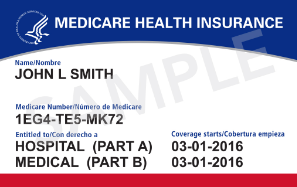Medicare Part D was established in 2006 and is a federal program administered through private insurance companies who offer network-based retail prescription drug coverage to Medicare beneficiaries.
Beneficiaries can combine Part D with their Original Medicare benefits, choose a drug plan that is built into to a Part C Medicare Advantage plan, or enroll in a Medicare Advantage plan that does not include prescription drug coverage and add on a standalone prescription drug plan. If you purchase a Medicare Supplement, you will still need to enroll in a standalone prescription drug plan.
Any Medicare beneficiary enrolled in Part A and Part B is eligible for Part D.
You pay a monthly premium to an insurance carrier for your Part D plan and in return, you use the insurance carrier’s network of pharmacies to purchase your prescription medications. You can also receive your prescriptions via mail order. Instead of paying the full cost of the drug, which in some cases can be incredibly expensive, you will pay a copay or percentage of the drug’s cost.
Note: Your Part D insurance card will be separate from your Medicare card.
Each year, each carrier must submit its plan outline to the Centers for Medicare and Medicaid Services for approval. Every carrier has its own unique formulary, meaning every plan covers a different combination of drugs. Moreover, even if two different plans cover the same drugs, they may categorize them in different tiers, meaning the cost to you would be altered.
The pharmacy you purchase drugs from will also matter, as preferred pharmacies within a carrier’s network will mean lower costs for you.
How does Medicare Part D work?
Part D drug plans have four important parts:
- Annual Deductible: Plans may charge the full Part D deductible, a partial deductible, or have no deductible at all. You will pay the network discounted price for your medications until your plan tallies that you have satisfied the deductible. After that, you enter “initial coverage.”
- Initial Coverage: You will pay a copay for your medications based on which tier the drugs fall in within the plan. For example, a plan might assign a $6 copay for a Tier 1 generic medication. A Tier 3 drug could be a preferred brand name and might have a $35 copay, etc. The carrier tracks the spending by both you and the carrier until you reach the next stage: the coverage gap. It is important to note that if the cost of your drugs is low enough on an annual basis, you may never reach the coverage gap.
- The Coverage Gap: The coverage gap has also been known as the “donut hole.” The good news is the gap has been closing over the last few years. Now, you will pay no more than 25% of the retail cost of your brand-name medications. This will continue until your out of pocket cost has reached the other side of the gap. The good news is that you will get credit for 95% of the cost of the drug even though you’re only paying 25% or less. The manufacturer pay 70% to discount the price for you and the plan pays another 5% of the cost.
- Catastrophic Coverage: Once you reach the other side of the gap, you will pay only a small coinsurance or copay for covered drugs for the rest of the year.
Your progress through the four parts of Part D are guided by your True Out-of-Pocket Costs (TrOOP). While much of what you pay counts towards your TrOOP, not everything does. Your plan’s monthly premium, for instance, would not.
Drug Utilization Rules
Drug plan carriers have rules for consumer safety and cost containment.
Quantity Limits : A restriction on how much medication you can purchase at one time or upon each refill. If your doctor prescribes more than the quantity limit, the insurance company will need him or her to file an exception form to explain why more is necessary.- Prior Authorization: Requirement that you or your doctor obtain plan approval before allowing a pharmacy to dispense your medication. For some very costly or very strong medications, the insurance company may ask for proof that the prescription is medically necessary before they allow it. Just because authorization is requested does not mean it will be granted.
- Step Therapy: Requires you to try less expensive alternatives that treat the same condition before they cover the prescribed medication. If the alternative works, everyone saves money. If it does not, your doctor will help you receive coverage for the original medication prescribed, including providing proof that the alternative was ineffective.
Some medications are not covered by Part D. If you take a medication that is not in the formulary, you will have to file an exception to try to get that drug approved. Be aware, NOT ALL EXCEPTIONS ARE APPROVED. In those instances, you may pay out of pocket for any medication that is not covered by your plan or by Part D as a whole.




